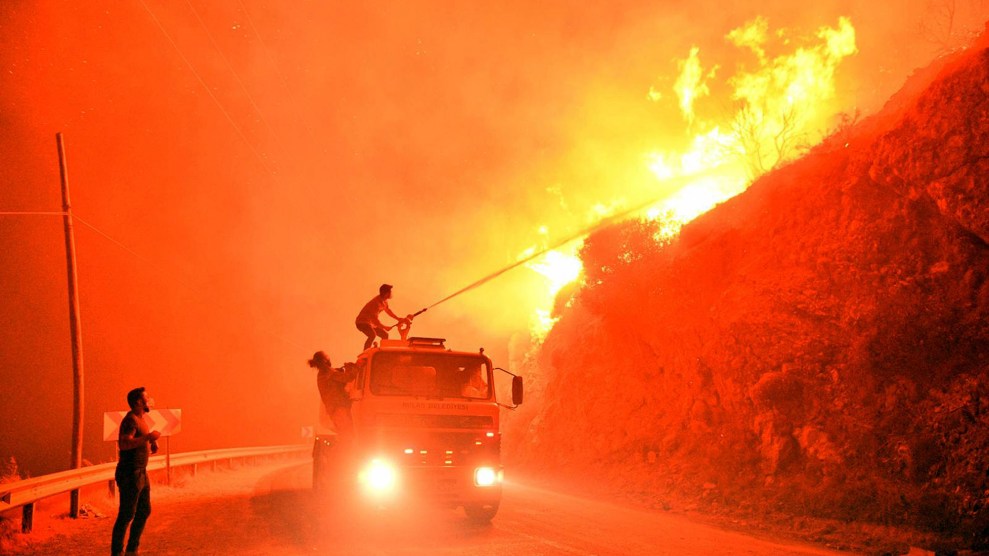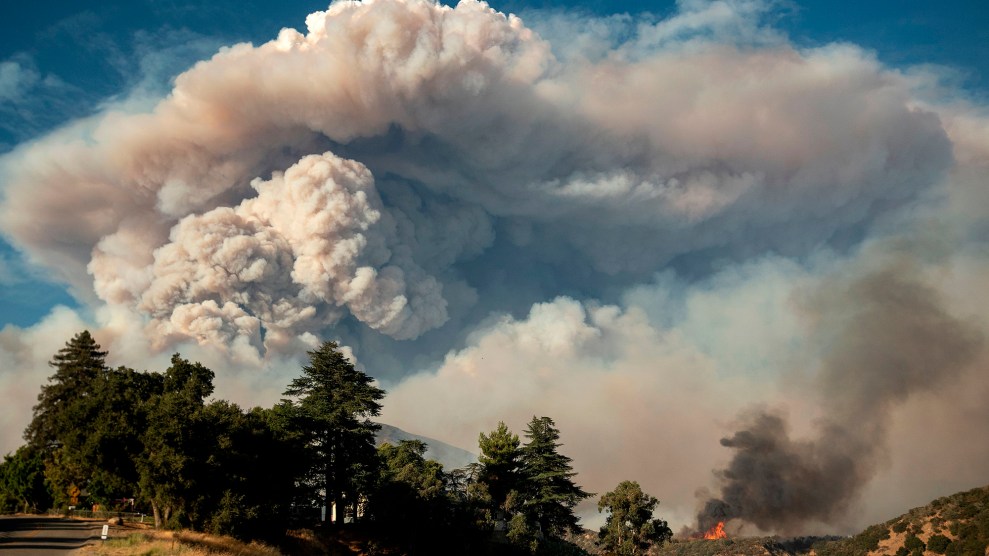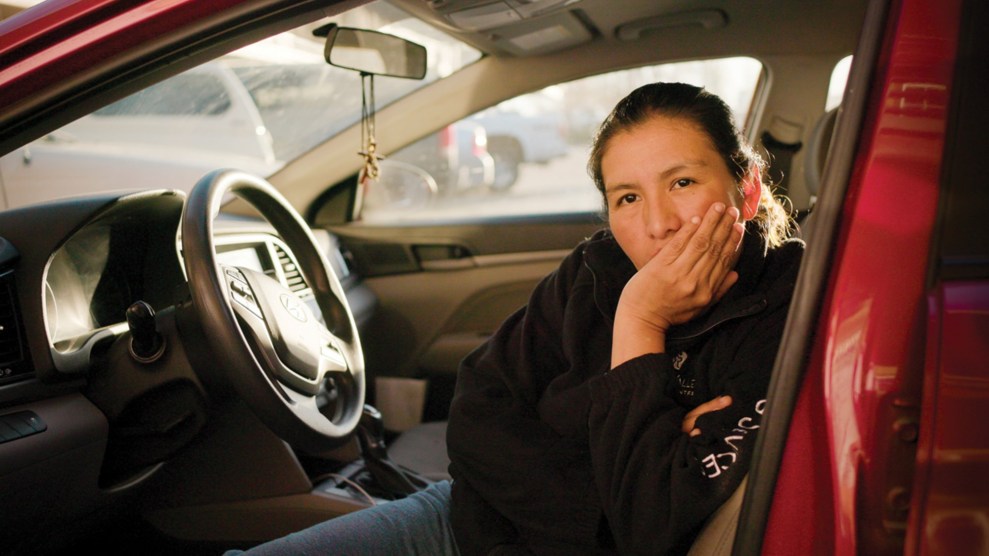
Firefighters battle against a wildfire in Turkey.Xinhua/ZUMA
The United States is in the throes of yet another devastating wildfire season with the Dixie Fire becoming the third-largest wildfire in California history. Earlier this week, the fire forced the residents of Greenville, California to flee as it left the small town of approximately 1,000 people in ashes and rubble. Further south, the River fire burned 100 buildings and forced more evacuations. As of Friday, the Dixie Fire is 35 percent contained, while firefighters have contained 40 percent of the River Fire.
These fires are a part of the 100 active fires burning in 14 different states right now. The Bootleg Fire, which began last month in Oregon, is so powerful it was generating its own weather including wind, lightning, and fire clouds. The blazes are being fueled by exceptionally dry conditions across half the country. About 90 percent of the western portion of the US is experiencing drought conditions with no end in sight. The west has also suffered punishing heat waves in recent weeks, with temperatures soaring into the triple digits in multiple states.
Unfortunately, it’s not just the US. Europe has also faced heat waves and wildfires in Italy, Turkey, and Greece. Greek firefighters are battling 154 blazes in the country which have forced hundreds to flee their homes. On the island of Evia, 650 people were evacuated by boat as the inferno raged.
Absolutely terrifying footage from a ferry carrying passengers escaping the shores of Lake Evia in #Greece. pic.twitter.com/5H9jzapXl0
— Dino Sofos (@dinosofos) August 7, 2021
The climate crisis is exacerbating drought and fire conditions, with fires burning earlier and earlier each year. And climate science experts are warning that the western US is stuck in a disastrous feedback loop of heat, drought, and fire. “As we’re getting these very extreme heat waves, it’s just making the drought even worse, even though drought is initially caused by the lack of precipitation,” Julie Kalansky, a climate scientist told CNN. “But during the dry months of much of the West, these heat waves just continue this drying throughout the summer and into the fall.”


















